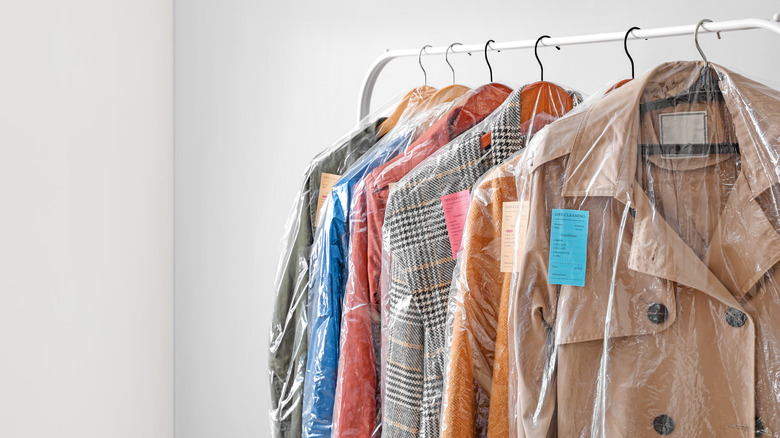Why Dry-Cleaning Could Soon Be A Problem
In 1970, former President Richard Nixon and the United States government established the Clean Air Act. According to the United States Environmental Protection Agency (EPA), the act gave the EPA the authority to establish, address, and regulate air pollutants in order to establish National Ambient Air Quality Standards. "I think that 1970 will be known as the year of the beginning, in which we really began to move on the problems of clean air and clean water and open spaces for the future generations of America," Nixon said at the time the act was established, according to the EPA. In 1990, former President George H.W. Bush made several revisions to the Clean Air Act. From that point on, more than 180 hazardous air pollutants and chemicals, like asbestos, mercury, and lead, existed on the list of pollutants to be curbed in the Clean Air Act, per The Washington Post.
In its first 20 years of existence, from 1970 to 1990, the Clean Air Act prevented more than 200,000 premature deaths and 700,000 cases of chronic bronchitis, per the EPA. What's more, between 1990 and 2010, the Clean Air Act cut emissions of these harmful pollutants by 41 percent in the United States.
Despite this progress, the EPA had not updated its list of harmful chemicals outlined in the Clean Air Act since 1990. That is, however, until very recently.
A chemical commonly used in the dry-cleaning process is harmful to humans
On January 5th, 2022, the EPA announced that it would be adding a new harmful chemical to its list of over 180 hazardous air pollutants and chemicals. The EPA added 1-bromopropane, a powerful chemical often used in dry cleaning and the auto industry due to its ability to clean dirty fabrics and de-grease metal parts, according to the Washington Post. The government agency was prompted to add 1-bromopropane to its list of hazardous substances outlined in the aforementioned Clean Air Act due to the fact that it can cause irritation of the eyes, mucous membranes, the skin, and, more alarmingly, damage to the body's nervous system, per the Occupational Safety and Health Administration (OSHA).
For decades, several government officials and environmentalists had attempted to add this chemical to the Clean Air Act, but, as the Washington Post reported, it has only recently been made a priority.
"People have been living with this for years, and living with an unregulated carcinogen in their backyard is not fair," Michael Hansen, the head of the Greater-Birmingham Alliance to Stop Pollution, told the Washington Post. "On the one hand, glad it's being regulated now, but wish it had been sooner." A spokesperson for the EPA also told the publication that the agency will be proposing some sort of "regulatory infrastructure" to curb the use of 1-bromopropane — which could spell trouble for the dry cleaning industry, as it relies heavily on the chemical.

